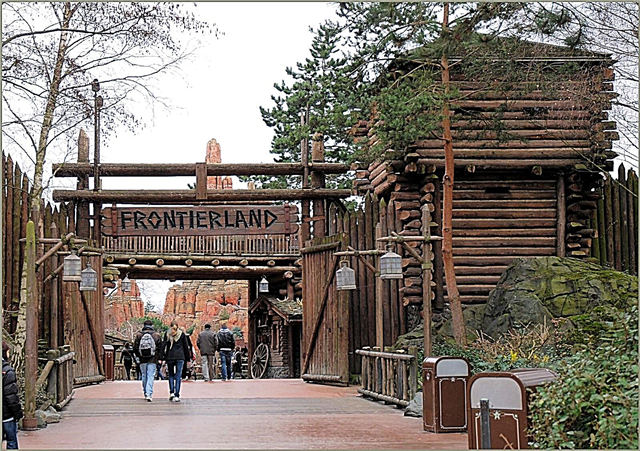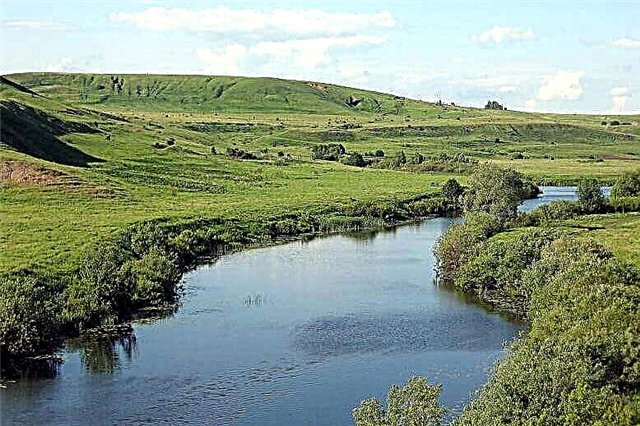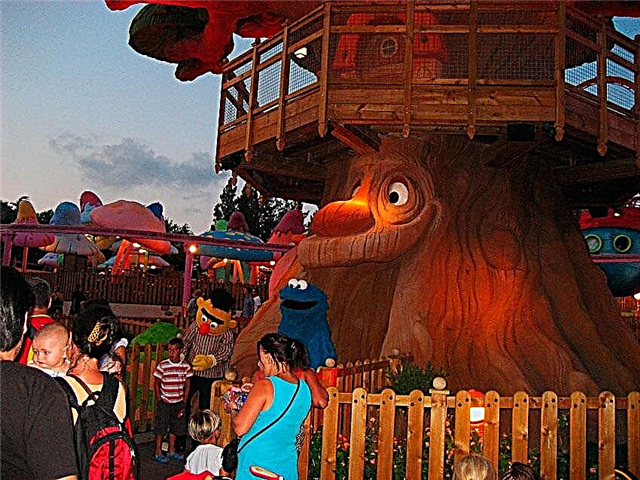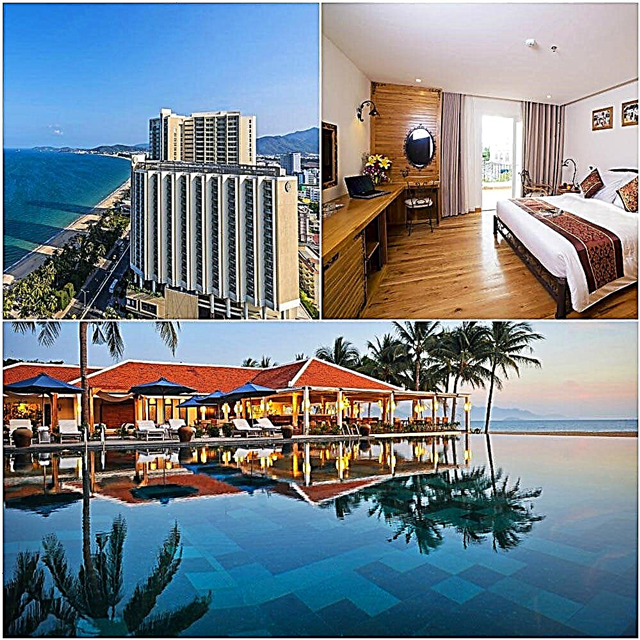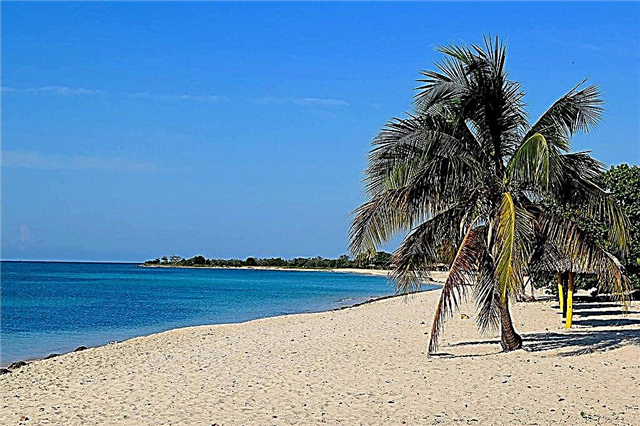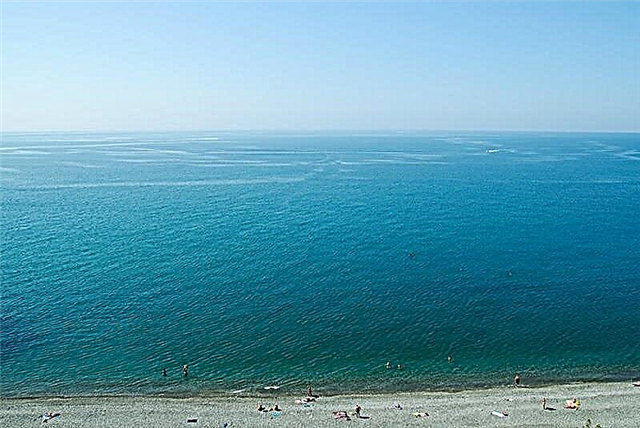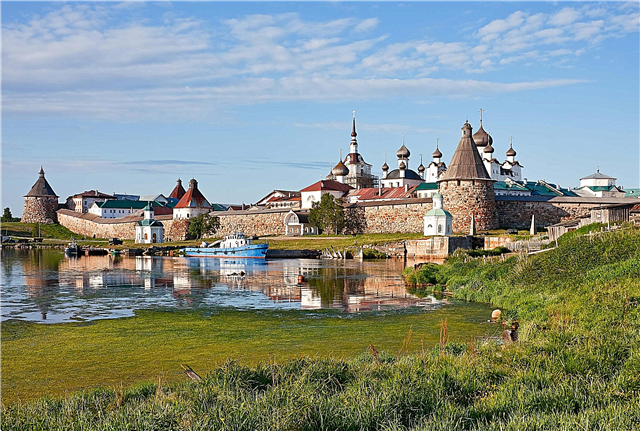There are several types of state museums in Russia. The category of open-air museums, which, in addition to cultural or historical objects, also includes a large natural area, is called "Museum-reserves". The status of the reserve gives such museums a special regime for the use and preservation of the territory. Museum-reserves have a special, unique value for the cultural heritage of the country.
The Mikhailovskoye Museum-Reserve was the first to receive this special status. Following him, this status was received by other writers' estates - Yasnaya Polyana, Tarkhany. Also, this status is given to places where it is important to preserve the architectural historical appearance, for example, monastic complexes - the Kirillo-Belozersky Monastery or palace territories, such as Peterhof. Many reserve museums preserve the historical environment of ancient settlements, for example, Kizhi.
Outstanding objects of cultural heritage of Russia
List of museum-reserves, which are among the most valuable monuments of history and culture of the peoples of the Russian Federation.
"Moscow Kremlin"
A world-famous place, a symbol not only of the capital of Russia, but of the entire country. It is of great historical and political significance - the walls of the Kremlin have been the seat of power for many centuries and up to now. The museum complex is an architectural ensemble of buildings of the 15th-20th centuries. They are based on cathedrals - the Annunciation, Assumption, Arkhangelsk, the Church of the Deposition of the Robe and the Armory. They have preserved centuries-old interiors. The entire ensemble is included in the UNESCO heritage list.
Address: Moscow, Kremlin
Website: www.kreml.ru

"Kizhi"
Valuable open-air cultural and historical complex. Its area is over 10,000 hectares. The unique ensemble of the Kizhi Pogost Museum, founded in the 18th-19th centuries, is included in the list of UNESCO heritage sites. Monuments of wooden architecture are complemented by buildings from Russian, Karelian and Vepsian villages. The basis of the complex is the Pokrovskaya and Transfiguration churches and the bell tower, surrounded by a fence. The old churches are magnificent both outside and inside. Painted iconostases are decorated with carving and gilding.
Address: Republic of Karelia, Petrozavodsk, Kirov square, 10 A
Website: kizhi.karelia.ru

"Museum-Estate of Leo Tolstoy" Yasnaya Polyana "
The estate in the Tula region, which changed several famous owners - princes Kartsevs, princes Volkonsky and noblemen Tolstoy. It was in this place that Lev Nikolaevich wrote the novel "Anna Karenina" and the world-famous novel "War and Peace". The grave of the great writer is also located here. The manor's exposition includes the main dwelling house and outbuildings that have preserved the historical view from the outside and the authentic atmosphere of the times of L. Tolstoy's life inside. The natural composition is interesting - parks, alleys, ponds.
Address: Russia, Tula region, Schekinsky district, p / o Yasnaya Polyana
Website: ypmuseum.ru

"Rostov Kremlin"
The historical architectural complex was built at the end of the 17th century on the initiative of the Yaroslavl and Rostov Metropolitan. The architectural ensemble of structures of the Rostov Kremlin is located in a picturesque place on the shores of Lake Nero. The main decoration of the museum is the Assumption Cathedral, erected at the beginning of the 16th century. The most elegant building is called the Church of St. John the Evangelist. In the middle of the last century, the buildings of the Rostov Kremlin underwent a large-scale reconstruction. Most of the buildings are now in excellent condition.
Address: Yaroslavl region, Rostov, Cathedral square, 8
Website: www.rostmuseum.ru

Borodino military history museum-reserve
One of the oldest museums in the world, based on the battlefield of the famous Borodino battle. The territory of the museum is 111 km². The Borodino Museum received the UNESCO Prize for the preservation of the original cultural and historical landscape. The funds of the museum contain more than 65,000 copies. Among them there is a collection of paintings, archaeological finds, a collection of military costumes. Valuable exhibits are the banners and awards of 1812, as well as personal belongings of Kutuzov, Emperor Napoleon and Emperor Alexander I.
Address: Moscow region, Mozhaisky district, Borodino village
Website: www.borodino.ru

Museum-reserve of Alexander Pushkin "Mikhailovskoye"
The family estate of the Pushkin family. The great poet lived and worked in it for many years. The estate suffered greatly after the revolution and during the Great Patriotic War. During the reconstruction, the estate itself was restored, as well as the Svyatogorsk monastery, where Alexander Sergeevich was buried. The atmosphere of the poet's life has been recreated in the house-museum. Also, the list of objects of the reserve includes several settlements, museums in an old mill and "Pushkin village". The natural landscape part includes several lakes, a park and meadows around the Soroti River.
Address: Pskov region, Pushkinogorsk district, town. Pushkinskie Gory, boulevard named after S.S. Geychenko, 1
Website: pushkin.ellink.ru

Ryazan Kremlin
The museum includes 18 monuments of culture and history. The architectural ensemble of the Ryazan Kremlin Museum is considered one of the oldest in the country - most of its buildings were built in the 11th-19th centuries. The oldest part of it was built in 1095. The center of the ensemble is the Assumption Cathedral. The bell tower of the cathedral can be seen from anywhere in the city. The Nativity of Christ Cathedral was built in the 15th century. The tomb of the Ryazan bishops is located in the Archangel Cathedral. A defensive earthen rampart with a length of 290 meters has been preserved.
Address: Ryazan, st. Kremlin, 15
Website: ryazankreml.ru

Solovetsky Museum-Reserve
Located on the islands of the White Sea. The natural component of the reserve is represented by landscapes of coniferous forests, wetlands and hundreds of lakes. The cultural and historical value of this place covers the period from the 5th to the 20th century. One of the largest pagan sanctuaries is located here. The example of medieval architecture is the Solovetsky Monastery. In Soviet times, it housed a labor camp. The cultural and historical ensemble of the objects of the Solovetsky Islands is included in the UNESCO protection list.
Address: Arkhangelsk region, Primorsky district, Solovetsky settlement
Website: www.solovky.ru

"Malye Korely"
Museum of Wooden Folk Art and Architecture. Located on the banks of the Northern Dvina. It contains more than a hundred buildings of the 17th-20th centuries for various purposes - residential, cult, religious, economic. They are combined into several expositions imitating settlements from different regions of the region with characteristic layout models. The pride of the museum is the collection of windmills and a collection of bells. The museum hosts major folklore festivals with folk rituals, attracting about 100,000 visitors.
Address: Arkhangelsk, Chumbarov-Luchinsky Avenue, 17
Website: www.korely.ru

"Peterhof"
The most famous landmark of St. Petersburg. This is a magnificent residence of the emperors. Famous fountains flow among the luxurious palaces, pavilions and lakes. Hundreds of thousands of tourists from all over the world come to see them. The system of fountains on the terraces of the Grand Palace is considered the most beautiful in the world. It includes 75 fountains on cascading stairs, they are decorated with more than 200 statues, two grottoes are equipped. The park is decorated with buildings from the time of Peter I - the Monplaisir Palace, the Marly Palace on the bank of the pond.
Address: Peterhof, st. Adjustable, 2
Site: peterhofmuseum.ru

Lermontov Museum-Reserve "Tarkhany"
A picturesque estate 100 kilometers from Penza. The famous poet M. Yu. Lermontov spent his childhood there. The estate is a magnificent example of park art; it contains many exhibits of the life of landowners of the 18th-19th centuries. The main funds of the museum are kept in the manor house. There are collected personal belongings from the poet's childhood and family heirlooms.The estate also includes: the place where the poet played in childhood, a church, a human hut, a windmill. The poet's grave is located in an oak grove in the far corner of the park.
Address: Penza region, Belinsky district, Lermontovo village, Bugor street, 1/1
Site: tarhany.ru

Museum-reserve of I. Turgenev "Spasskoye-Lutovinovo"
Memorial Museum of the famous Russian writer. The family nest of the Turgenevs was neglected for several decades - the house was dilapidated, the park was partially cut down, manuscripts and heirlooms were sold to the heirs. In 1921, the restoration of the estate began. The historical appearance of the estate has been restored from memories and photographs. A birch alley has been re-planted in the park. The collection contains Turgenev's authentic things, furniture, family values. The unique historical and architectural appearance of the estate has been restored.
Address: Oryol region, Mtsensk district, Spasskoye-Lutovinovo village, Museum street, 3
Site: spasskoye-lutovinovo.ru

"Tsarskoe Selo"
Country imperial residence, which is included in the list of UNESCO heritage sites. It is an architectural monument of the 18th century of world importance. The Baroque Catherine Palace is the center of the ensemble of the palace and park complex. The decoration of the Great Hall and the ceremonial premises delight in luxury and beauty. The area of the reserve is 300 hectares. On its territory there are more than 100 monuments of culture and architecture - palaces, pavilions, marble monuments, graceful bridges, exotic structures.
Address: St. Petersburg, Pushkin, st. Sadovaya, 7
Website: www.tzar.ru

Kirillo-Belozersky Museum-Reserve
Monastery, it was founded by monks in 1397. In 1924, it became an object of state cultural and historical significance, which allowed the monastery to avoid the sad fate of many other religious buildings in Soviet times. During its heyday, the monastery was the largest in Europe and was a fortress city. Its area is 12 hectares, it houses the cathedral, churches, the Holy Gates. In the 17th century, influential people were exiled to the monastery, and Ivan the Terrible left him generous gifts when he visited.
Address: Vologda region, Kirillov
Website: kirmuseum.org

Vladimir-Suzdal Museum-Reserve
A unique complex that combines architectural monuments of Vladimir, Suzdal and Gus-Khrustalny. In total, it includes 56 different buildings - defensive, residential, church, stone and wooden. White-stone buildings of the XII-XIII centuries are of particular value. 8 of them are included in the UNESCO heritage list. The exhibitions that are held in the buildings of the museum are of great historical and cultural value. Tourists from all over the world come here, because it is here that you can feel the whole atmosphere of Ancient Russia.
Address: Vladimir, st. Bolshaya Moskovskaya, 43
Website: www.vladmuseum.ru

Novgorod Museum-Reserve
One of the largest ancient museums in Russia. The museum includes objects located in different cities of the Novgorod region. The central object is the Novgorod Kremlin. The permanent expositions of the museum provide an opportunity to trace the history of the development of the region. Within its walls are collections of various subjects - archeology, numismatics, old books. Works of art of the 10th century are of particular value. For guests of the museum, master classes on folk art and folklore holidays are held.
Address: Novgorod region, Veliky Novgorod, Kremlin, 11
Website: novgorodmuseum.ru

Museum-reserve of M. A. Sholokhov
The State Museum, located on the territory of the estate, where the writer Sholokhov lived and worked. It contains thousands of exhibits related to the life of the writer and his creative activities. Various exhibitions tell about different periods of Sholokhov's life. They display about 70,000 items - manuscripts, personal letters, household items. The total area of the reserve is 38,000 hectares, of which the area of natural landscapes is 3,000 hectares. At the end of May, the festival of literature "Sholokhov Spring" is held annually.
Address: Rostov region, Sholokhovsky district, village Vyoshenskaya, Sholokhov street, 60
Website: novgorodmuseum.ru

"Kulikovo field"
The museum is located in the place where the Kulikovo battle took place. It was created to preserve the memory of the dedication and great feat of the Russian troops in a difficult battle. The most majestic and significant objects of the museum are the temples of St. Sergius of Radonezh and the Nativity of the Blessed Virgin Mary, a column-monument to Dmitry Donskoy. The museum funds include about 50,000 exhibits. They are located in several buildings in different places - in the village of Monastyrshchino, the village of Epifan, on the Red Hill. More than 150,000 people visit the reserve annually.
Address: Tula region, Kurkinsky district
Website: www.kulpole.ru

"Battle of Stalingrad"
The museum is a large-scale battle panorama telling about one of the most important battles of the Great Patriotic War. The museum was founded in a historical place - it was here on the banks of the Volga in 1942 that the 13th rifle division landed. Famous and talented artists worked on the panorama expositions. In the "Memory" hall, multimedia projects have been implemented, themed video installations have been arranged. In addition to the panoramic museum, the structure of the memorial reserve includes the complex "To the Heroes of the Battle of Stalingrad" on the Mamayev Kurgan and other objects.
Address: Volgograd, V.I. Lenin
Site: stalingrad-battle.ru

"Chersonesus Tauric"
The reserve of history and archeology is included in the list of objects protected by UNESCO. Chersonesos has been the center of the economy, culture and politics of the Northern Black Sea region for more than 2000 years. These are the ruins of the ancient city of the Dorian Greeks in the south-west of Crimea. At present, the remains of public and residential quarters, squares, temples and towers have been preserved from the old city. The central square of Chersonesos has existed since the 5th century. The building of the ancient theater has survived; in 2019, President V.V. Putin attended the performance on its new stage.
Address: Sevastopol, Drevnyaya st., 1
Site: chersonesos-sev.ru


